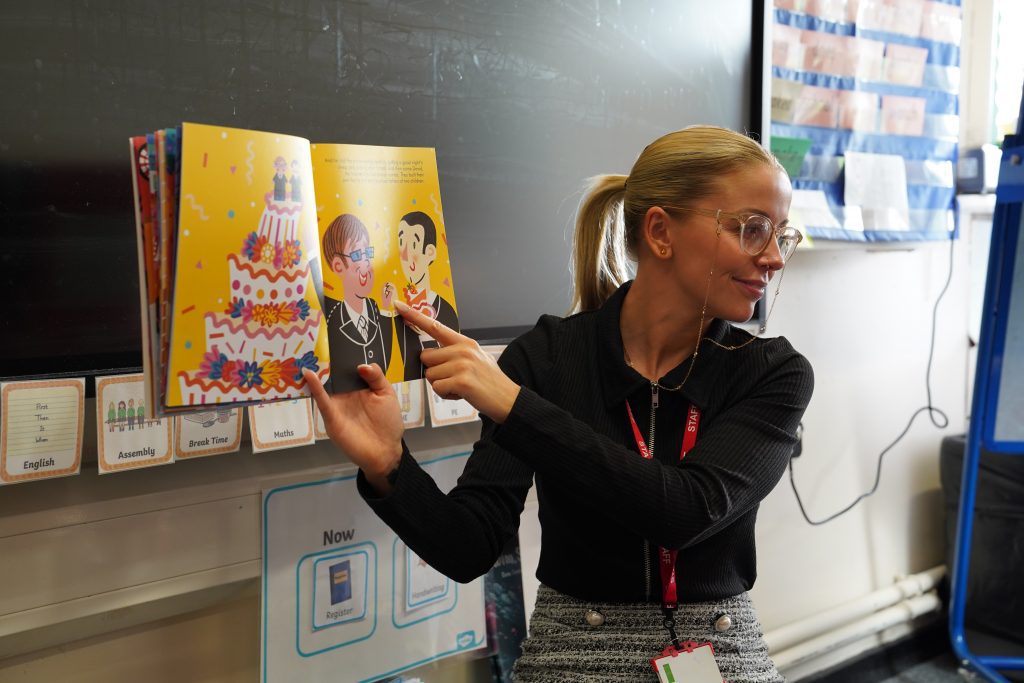Decodable books
Decodable books are necessary for children who are learning to read because they should read books that match the sounds they already know. To make steady, confident progress in decoding, they need to build cumulatively and systematically on their earlier learning. Decodable books, therefore, are specifically organised to match the order of the sounds being taught in the programme.
Children should be listening to stories that they cannot yet read for themselves and, once they can read, we should help them develop the habit of reading widely and often, for pleasure and information. But, until that time, they should be consolidating their decoding.
Why book bands are not a good idea
Some teachers, however, who teach reading rigorously during the day using phonics, still actively encourage children to take home books from book band boxes. This undermines substantially what children are learning about how to decode. Allowing children to take home books from book band boxes hinders their progress. This is because book bands mix together books from different phonic schemes – even those with different progressions of sounds – with ‘look and say’ reading schemes, and other books. If a child takes home a book from a book-band box and comes across an unfamiliar word, they have to guess at it if it includes sounds that they have not yet been taught. Only when children know the full range of grapheme-phoneme correspondences are they in a position to make an informed attempt to decode unknown words for themselves.
In suggesting which books should fall into which coloured book bands, publishers have different criteria relating to decodability, the complexity of syntax, and each book’s structure, vocabulary and length. The number of these possible permutations makes accurate book banding unachievable – even if it were a good idea in the first place. What is ‘grey’ for one publisher is not necessarily ‘grey’ for another. Publishers have also been known to change their criteria from one year to another, so last year’s ‘grey’ may be this year’s ‘brown’.
Have you read Sea Prayer by Khaled Hosseini? This is a heart-wrenching story about a father and son who are waiting for dawn to break and a boat to arrive. The father knows that, when the sun rises, they will embark on a perilous voyage in search of a new home. Hosseini wrote the book in memory of a small child who drowned on the journey. The words are simple to decode, the sentences are short, and there are very few words on each page. So, which band would this fall into? Brown, grey, orange? Once I had read this to my Year 6 children, I would hope they would all feel moved to read it for themselves. Surely, we do not want to say, ‘Sorry, but this book isn’t for you – you’re only on lime’?
Assessing reading
Assessing children’s reading by gauging their progress through book bands does not make them better readers or make for accurate assessment. It might look as if they are making progress when they move from one coloured band to the next, but actually we communicate the message – to parents as well as children – that reading means tackling harder and longer books. That is not to say that we do not want children to read harder books, but we do not want them to believe that reading a harder book each time is the purpose of reading.
Promoting books to children
The effort needed to know children’s books is worth it: reading is the one thing that will ensure they make progress. Wise teachers choose books their children will enjoy; they know the books they are more likely to read. They think about a book’s potential emotional impact – will it make their children angry, excited or make them laugh? Is this a story that their children would want to read under the bedclothes? These teachers think about how they can hook children into new authors and new subjects. In short, they think: ‘What can I do to get them to read?’ In the end, readers teach themselves.
Ofsted
Ofsted’s 2019 School inspection handbook recognises the distinction between making progress in decoding (using phonics) and becoming a reader in the wider sense. The handbook says that inspectors will consider whether:
- the sequence of reading books shows a cumulative progression in phonics knowledge that is matched closely to the school’s phonics programme. Teachers give pupils sufficient practice in reading and re-reading books that match the grapheme-phoneme correspondences they know, both at school and at home
AND
- stories, poems, rhymes and non-fiction are chosen for reading to develop pupils’ vocabulary, language comprehension and love of reading. Pupils are familiar with and enjoy listening to a wide range of stories, poems, rhymes and non-fiction.1
Action – book banding
Don’t!

